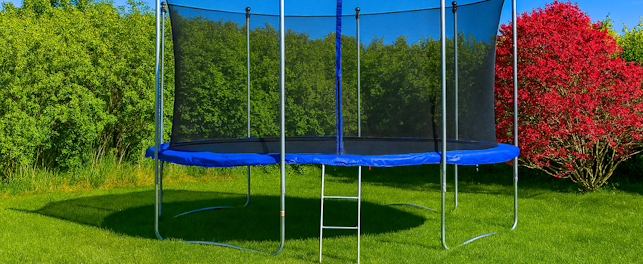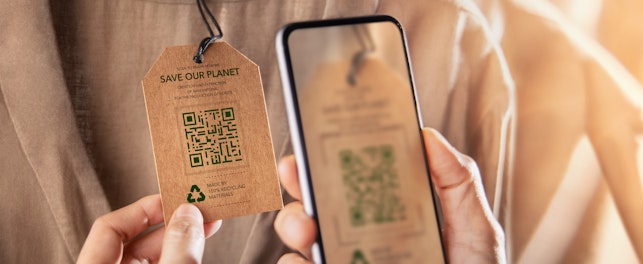SG 104.22
Washington State’s Department of Ecology has released preliminary draft restrictions and reporting requirements for 10 priority products evaluated under its green chemistry scheme.
The Safer Products for Washington program (RCW 70A.350), signed into law in May 2019, was designed to reduce toxic chemicals in consumer products – to protect people, the environment, and sensitive populations and species. It is structured in four phases in which the Washington State’s Department of Ecology (DoE) is tasked with (1) prioritizing chemical classes, (2) prioritizing consumer products, (3) determining potential regulatory actions and (4) rulemaking. Right now, the department is in its fourth and last phase of rulemaking. It released a preliminary draft rule on August 9, 2022, and will be accepting comments on its draft rule until August 31. Once the rule is signed into law it will add the new chapter 173-337 to the Washington Administrative Code.
The draft regulation is structured into Part A ‘General’ and Part B ‘Chemicals and consumer products.‘ Part A contains provisions relating to, amongst other items, the applicability of the rule, definitions of keywords, enforcement and penalties, and information on how to request an exemption under the rule. This part also specifies reporting requirements. According to the preliminary rule, reporting needs to be submitted to the DoE by January 31, 2024 and annually thereafter by January 31 of each year.
The rule would apply to:
- Entities manufacturing, selling (via various sale channels), or distributing priority consumer products containing priority chemicals in Washington State
- Entities intentionally adding priority chemicals in the production of priority consumer products in Washington State
- Entities using a priority consumer product that contains a priority chemical in Washington State
There is an option for exemption if a person required to comply with the Part B requirements submits a request to the DoE providing the justification for it.
Part B contains the actual chemical restrictions and reporting requirements. Overall, it targets five different chemical classes covering perfluoroalkyls (PFAS), ortho-phthalates, flame retardants, alkylphenol ethoxylates and bisphenols. It applies reporting requirements to four chemical product combinations, and restrictions to ten chemical product combinations. Product categories covered include electronics, food and drink cans, laundry detergent and furnishings. The newly released detailed restrictions and reporting requirements are highlighted in Tables 1 to 5 below.
The preliminary rule also introduces the concept of rebuttable presumptions. In cases where a restriction would apply to the intentional use of a chemical or chemical class, the DoE would presume the presence of those chemicals based on either their detection, or the detection of an associated sub-component, within the respective product. In the case of beauty and personal care products, listing of fragrances as an ingredient is also required to initiate the presumption. For example, a detectable total fluorine content would lead the DoE to presume PFAS use. The manufacturer could rebut this presumption by providing a statement to the DoE including supporting information that documents chemical content coming from a source other than the restricted substance(s).
173-337 WAC (DRAFT): PFAS Reporting Requirements and Restrictions
| Product | Effective date | Requirement |
|---|---|---|
| Aftermarket stain- and water-resistance treatments | January 1, 2025 | • Prohibited if it contains intentionally added PFAS • Rebuttable presumption¹ |
| Carpets and rugs | January 1, 2025 | • Prohibited if it contains intentionally added PFAS • Rebuttable presumption¹ |
| Leather and textile furniture and furnishings intended for indoor use | January 1, 2026 | • Prohibited if it contains intentionally added PFAS • Rebuttable presumption¹ |
| Leather and textile furniture and furnishings intended for outdoor use | January 1, 2024 | • Reporting of PFAS usage |
Remarks
1. The Department of Ecology presumes the detection of total fluorine indicates the intentional addition of PFAS
Table 1
173-337 WAC (DRAFT): Ortho-phthalates Reporting Requirements and Restrictions
| Product | Effective date | Requirement |
|---|---|---|
| Fragrances in beauty products and personal care products | January 1, 2025 | • Prohibited if it contains ortho-phthalates intentionally added as solvent or fixative for fragrance ingredients • Rebuttable presumption¹ |
| Vinyl flooring | January 1, 2025 | • ≤ 1,000 ppm of any ortho-phthalate individually or in combination |
Remarks
1. The Department of Ecology presumes the detection of ortho-phthalates, where the ingredients list does not identify ortho-phthalates, but does list fragrances, and indicates the intentional addition of ortho-phthalates used in fragrances
Table 2
173-337 WAC (DRAFT): Flame Retardants Reporting Requirements and Restrictions
| Product | Effective date | Requirement |
|---|---|---|
| Plastic external enclosures of electric and electronic products intended for indoor use | January 1, 2025 (TVs and electronic displays) January 1, 2026 (large businesses, not TVs or displays) January 1, 2027 (small businesses, not TVs or displays) |
• ≤ 1,000 ppm of any intentionally added organohalogen flame retardant - individually • ≤ 1,500 ppm of any intentionally added organohalogen flame retardant - in combination • Rebuttable presumption¹ |
| Plastic external enclosures of electric and electronic products intended for outdoor use | January 1, 2024 | • Reporting of any organohalogen flame retardant |
| Recreational covered wall padding made from polyurethane foam | January 1, 2024 | • Reporting of any of the following flame retardants - organohalogen flame retardant and certain organophosphate flame retardants (EHDPP, TNBP, TCP, TPP) |
| Other recreational products made from polyurethane foam | January 1, 2025 | • ≤ 1,000 ppm of any of the following flame retardants individually or in combination - organohalogen flame retardant and certain organophosphate flame retardants (EHDPP, TNBP, TCP, TPP) • Rebuttable presumption² |
Remarks
1. The Department of Ecology presumes that the detection of (A) total bromine concentrations above 1,000 ppm indicate intentionally added organohalogen flame retardants above 1,000 ppm, (B) total chlorine concentrations above 1,000 ppm indicate concentrations of intentionally added organohalogen flame retardants above 1,000 ppm and (C) total fluorine concentrations above 1,000 ppm without phosphorus indicate concentrations of intentionally added organohalogen flame retardants above 1,000 ppm
2. The Department of Ecology presumes the detection of (A) total bromine concentrations above 1,000 ppm indicate concentrations of intentionally added organohalogen flame retardants above 1,000 ppm, (B) total chlorine concentrations above 1,000 ppm indicate concentrations of intentionally added organohalogen flame retardants above 1,000 ppm and (C) total fluorine concentrations above 1,000 ppm indicate concentrations of organohalogen flame retardants above 1,000 ppm
Table 3
173-337 WAC (DRAFT): Alkylphenol Ethoxylates Restrictions
| Product | Effective date | Requirement |
|---|---|---|
| Laundry detergent | January 1, 2025 | • ≤ 1,000 ppm of any alkylphenol ethoxylate individually or in combination |
Table 4
173-337 WAC (DRAFT): Bisphenols Reporting Requirements and Restrictions
| Product | Effective date | Requirement |
|---|---|---|
| Drink can linings | January 1, 2025 | • Prohibition of bisphenol-based epoxy can liner (excluding TMBPF based liners) • Rebuttable presumption¹ |
| Food can linings | January 1, 2024 | • Reporting of bisphenol-based epoxy can liner (excluding TMBPF based liners) |
| Thermal paper | January 1, 2025 | ≤ 200 ppm of any bisphenol individually |
Remarks
1. The Department of Ecology presumes the detection of a bisphenol, excluding TMBPF, indicates the use of a bisphenol-based epoxy can liner
Table 5
SGS is committed to providing information about development in regulations for consumer products as complimentary services. Through a global network of laboratories, SGS provides a wide range of services including physical/mechanical testing, analytical testing and consultancy work for technical and non-technical parameters applicable to a comprehensive range of consumer products. In the end, it’s only trusted because it’s tested. Contact us for more information or visit our website.
For inquiries, please contact:
Melanie Schubert
Senior Technical Manager, SGS NA.
t: +1 312 414 9394
Sanjeev Gandhi, Ph.D.
Deputy Vice President, SGS NA.
US & Canada Softlines Business Head
t: +1 973 715 9350
© SGS Société Générale de surveillance SA- 2022 - All rights reserved - SGS is a registered trademark of SGS Société Générale de surveillance SA. This is a publication of SGS, except for 3rd parties’ contents submitted or licensed for use by SGS. SGS neither endorses nor disapproves said 3rd parties’ contents. This publication is intended to provide technical information and shall not be considered an exhaustive treatment of any subject treated. It is strictly educational and does not replace any legal requirements or applicable regulations. It is not intended to constitute consulting or professional advice. The information contained herein is provided “as is” and SGS does not warrant that it will be error-free or will meet any particular criteria of performance or quality. Do not quote or refer any information herein without SGS’s prior written consent.



